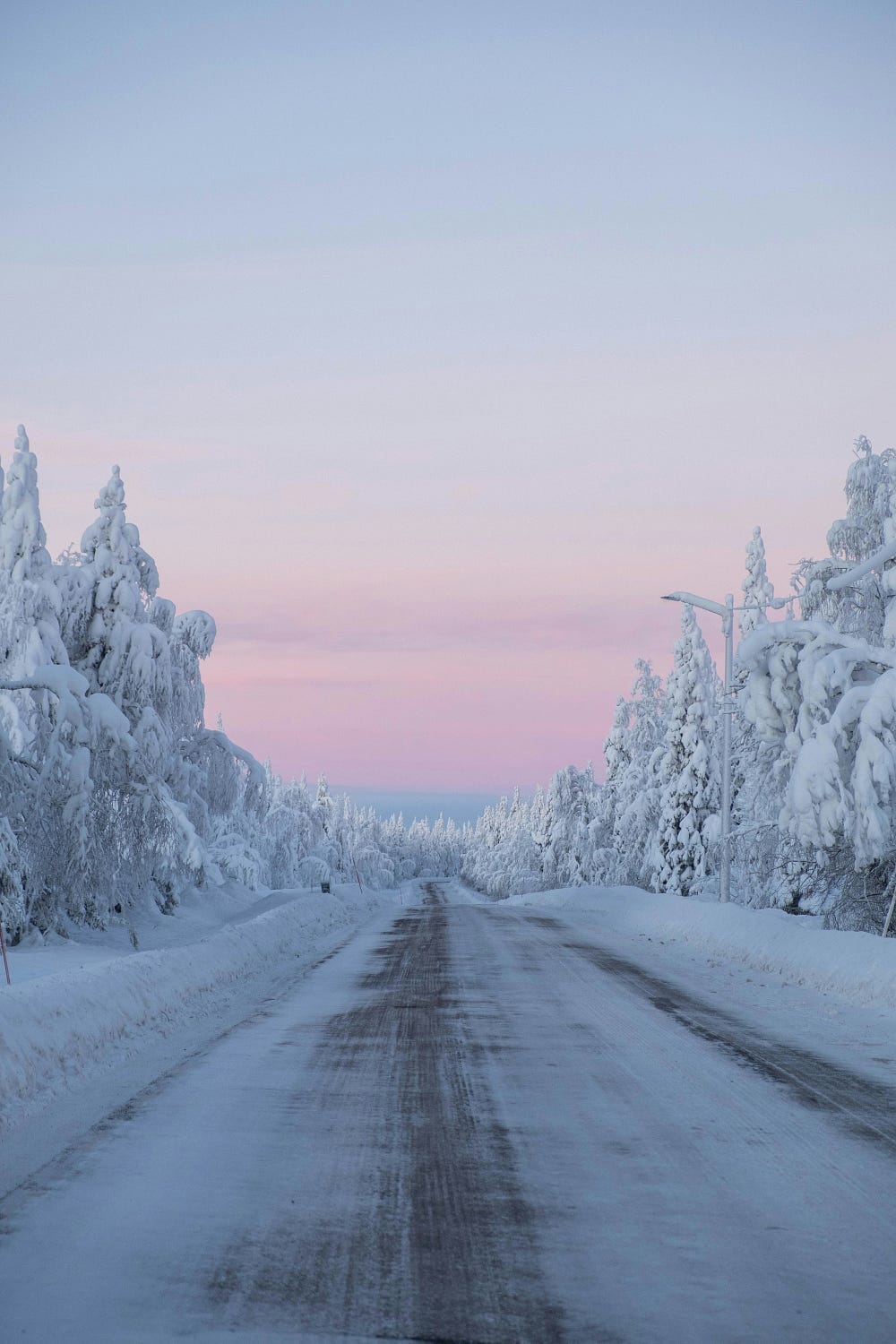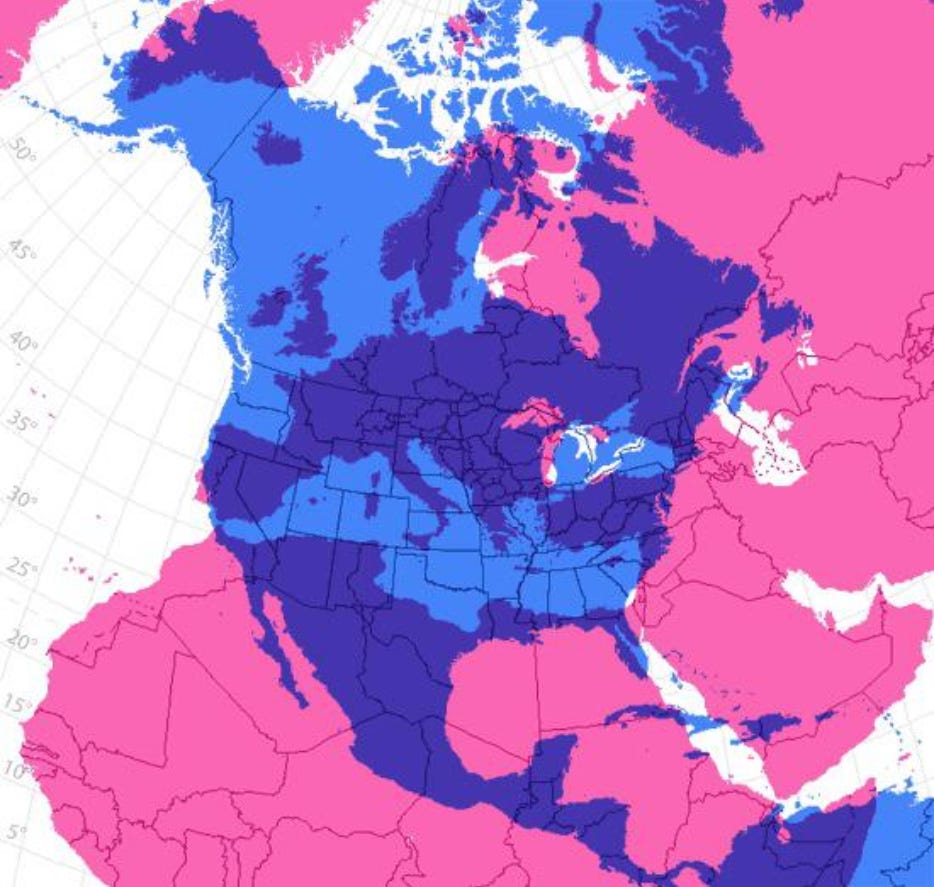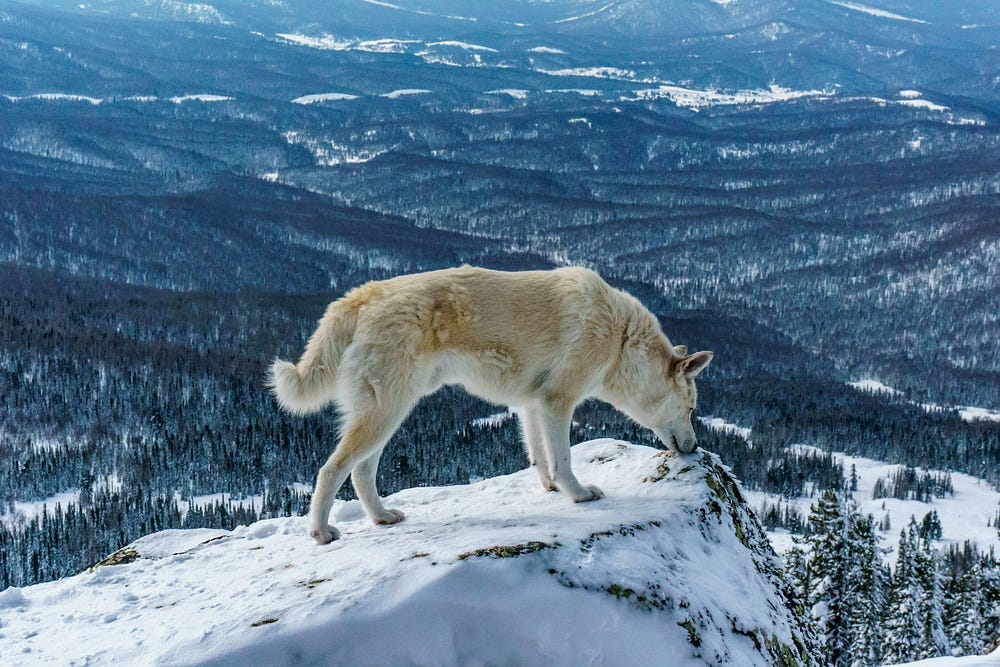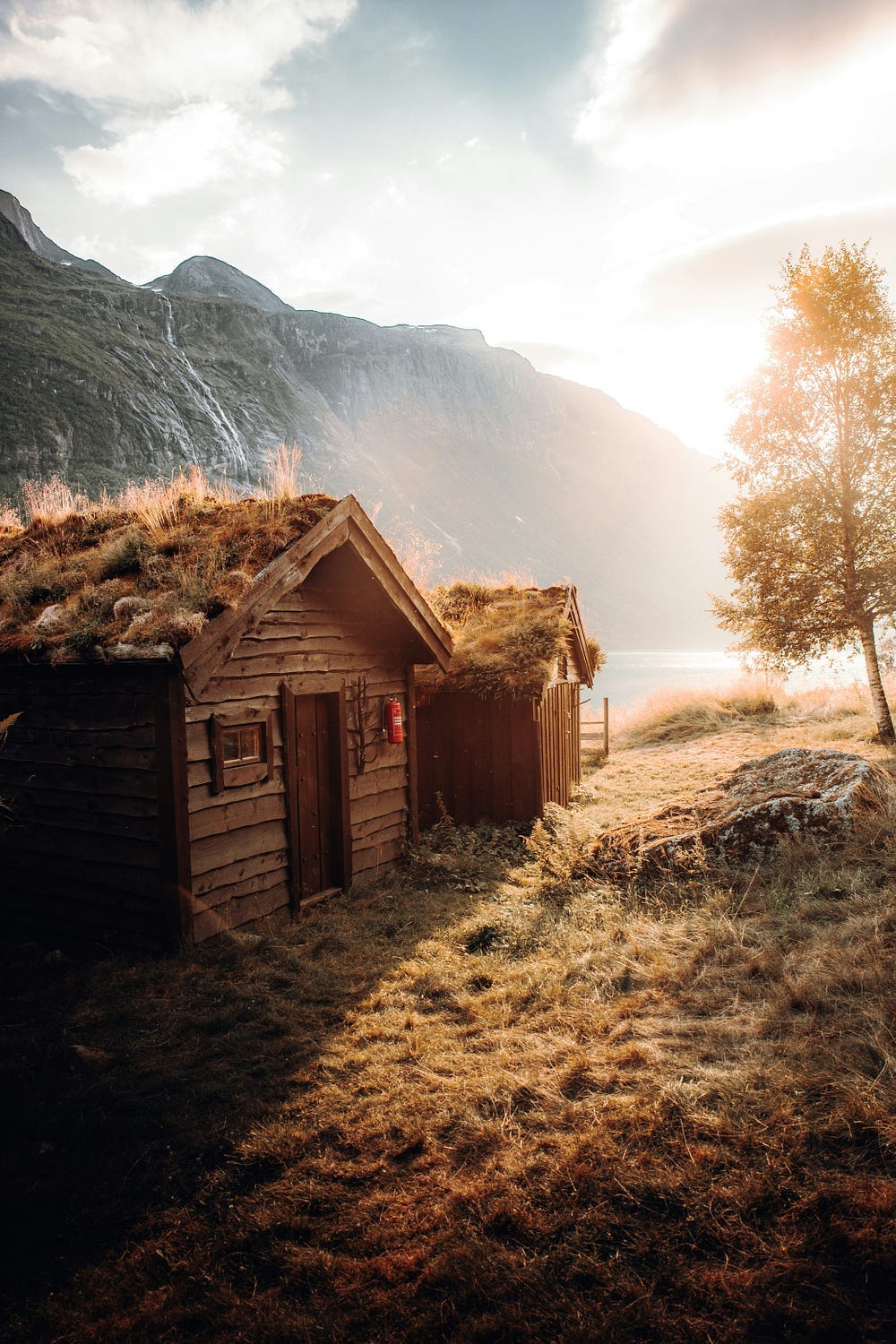
The beauty of complex systems is that you never get what you pay for. Despite recent temperature trends and shattered winter heat records, the sudden bout of warming experienced by Europe could all too easily tip over into a massive deep freeze with icebergs returning to Scotland. And while northern Europe could plunge into another ice age, the planet would just keep on heating up elsewhere.
According to a fresh report, “Europe is the fastest-warming continent, at nearly twice the average rate”. If you live there (as I do) it is hard to argue with that. Apart from an occasional cold spell lasting a week or two, presenting us locals with what an average winter used to look like a century ago, the past few cold seasons were extremely mild. And not just the coolest months of the year got warmer: “The latest 5-year averages show that temperatures in Europe are running 2.3 degrees Celsius above pre-industrial levels, compared to 1.3 degrees higher globally.” (1)
Recent trends prompted scientists saying that we are headed for an ‘uncharted territory’. But only if you rely overly on existing climate models… And you know the aphorism: all models are wrong, but some are useful. In other words: statistical models always fall short of the complexities of reality, but can still be useful nonetheless. And one would be hard pressed to find a more complex system than Earth’s climate itself. So yes, we are entering uncharted territory, but not the one depicted in the famous IPCC models. At least not in Europe.
So while it was relatively easy to calculate how the globe’s climate would react to a doubling of the amount of carbon-dioxide in the atmosphere (resulting in a roughly 4–5 °C of warming as predicted by Svante Arrhenius in 1896 already), it proved to be beyond our capacity to comprehend how the story will eventually play out. The reasons are twofold. One, we are evolved to understand the climate patterns of our immediate neighborhood — to know when to hunt for deer and when to expect the salmons’ return. Or to be able to better estimate how much food to preserve for the winter / dry season, or when and where to migrate. Not to run complex climate models on supercomputers. I mean that is a nice feat, but as you will see making precise predictions remains clearly beyond our capabilities. There are simply too many moving parts, and too many assumptions to be made.
This brings us to our second point: models built by humans with a limited comprehension of such a complex adaptive system as Earth’s climate will inherently be limited and chuck full of flaws. So while the direction we are headed is pretty clear — and could be even calculated on the back of an envelope — the exact timing and path is not. So much so, that we very well might experience another ice age in Europe for a couple of centuries till we eventually get to a “crocodiles sunbathing on the northern cost of Norway” scenario.
What causes this immense uncertainty and variability in predictions is the presence and activation of tipping points. (I cannot recommend enough Paul Beckwith’s no-nonsense channel on climate explaining just that.) In a nutshell tipping points are critical thresholds, at which even a tiny disturbance can switch the system from one state to a totally different other state. Such abrupt transitions are also irreversible on a human scale: once activated, the system would require an immense amount of time and healing to return to its original condition.
Take for example the gradual weakening of the Gulf stream (referred to as Atlantic Meridional Overturning Circulation or AMOC). Due to the relentless and ever accelerating influx of freshwater from the melting Greenland ice, the salty seawater of the AMOC (carrying warm water from the Caribbean to Northern Europe) could be diluted to the point where it will eventually fail to sink to the bottom of the ocean and return to the Caribbean to start another cycle. The bad news is, that we have got dangerously close to crossing this tipping point, already.

What further complicates this picture — were it not complicated enough — is the sudden withdrawal of sulfur from shipping fuels, another thing largely left out from current climate models. The recent mandate on clean bunker fuels, in a most unintended way, has deprived the atmosphere from an important source of aerosols making clouds brighter and more reflective. Thus, despite all good intentions, a clean fuel mandate has just accelerated warming — significantly. No wonder no one really wants to admit this.
James Hansen’s new paper proved, however, that the cooling effect from sulfur emissions was indeed underestimated in mainstream climate models, and that we have actually put ourselves on an accelerating path towards a much warmer planet. As they wrote: “it’s not the Sun that got brighter, but the Earth got darker.” Thanks to a sudden reduction in air pollution the planet as a whole now absorbs more sunlight than previously, equivalent to an additional 100ppm increase in CO2 concentration… As it was expected, and then proved with satellite measurements, this effect was more pronounced around shipping routes, especially in the Northern Atlantic. How this extra warming will affect the cooling resulting from a slowdown (and the likely collapse) of the AMOC is now anyone’s guess. One thing is for sure: a lack of aerosol emissions will further accelerate the melting of Greenland ice, and will certainly bring us closer to the moment of truth.
Paradoxically, the shut-down of the AMOC and the resulting cooling of Europe will be the best proof of global warming.
Oh, the beauty of those complex systems… Damn if you do something about them, damn if you don’t. In fact we are in a double whammy: if we were to reduce emissions from fossil fuels, we would also reduce the amount of aerosols screening sunlight, which in turn would further accelerate warming in the short run. As fossil fuel extraction hits an energetic limit, and starts to contract uncontrollably however, we will have to face this hidden warming no matter what… Well, it looks like that the die has been cast, and we don’t have to wait for much too long to see how the next chapter will unfold.

With that said, however, the abrupt shut down of the Gulf-stream will not result in a sudden deep freeze like the one depicted in The Day After Tomorrow. As I keep saying, collapse — be it economic, societal or climate — will look nothing like in the movies. This is why only very few of us recognize that our life support systems — the biosphere, energy extraction, finance, society etc. — is already in a free fall. Yes, Dear Reader, you are living through collapse as you sit in your chair and read these lines. These things just take an awful lot of time to unfold… At least compared to our attention span. On a historic, let alone geologic timeframe however, all this will seem to be but a blink of an eye, or a turn of a page.
So, what would happen to Europe should the AMOC indeed shut down for good? Thanks to the immense amount of heat stored in the ocean, should the Gulf stream stop delivering all that tropical warmth up north, Europe would experience a gradual cooling of 3°C per decade, eventually reaching an 8–10°C drop in annual average temperatures over a century or so (with Norway being exposed to a -20°C drop). By the end of this long period of constant change, the old continent could very well turn into a taiga forest, tying up at least some of the carbon released by centuries of industrial activity. Meanwhile such a change in heat circulation could also mess up rainfall patterns all across the globe, quite potentially turning the Amazon rainforest into a savanna... with consequences to match. On the positive side, this gradual re-freeze of the Arctic would also slow down the melting of Greenland, together with the thawing of the permafrost — potentially saving the planet from a massive release of methane.
For the people living in Europe, all this would come on top of the already unfolding deindustrialization, and an ever deepening energy crisis. The economy of Europe would quickly unravel as the additional heating demand would require an ever larger share of fossil fuels, even as their global supply continues to shrink in the decades ahead. This trend would make the energy economics of any manufacturing activity in Europe even worse (requiring even more energy to churn out the same amount of goods and to keep the workers warm), leading to the industry leaving this battered peninsula of Eurasia even faster.
In such an economic environment electric heat pumps powered by “renewables” would also remain a pie in the sky. The electric grid will crumble under the fluctuations from weather dependent power supply, the lack of hydro or nuclear base load (both due to ageing and in absence of energy to maintain them) or the balancing from natural gas plants. On the agricultural front the growing season would get shorter and totally unpredictable throughout the entire continent. Combined with an ever increasing cost of imported fertilizer and food, this process would lead to shortages, and eventually the reversal of migration trends. As a result of deindustrialization, de-energizing and a lack of food, Europe would depopulate even faster in the decades and centuries ahead, with only the southern half remaining sparsely inhabited.
Again, don’t expect these things to happen overnight, I’m not talking about today, or “the day after tomorrow” here. More like decades of a “long emergency”, loaded with all sorts of crises back to back.
Without fossil fuels the four pillars of modern industrial societies (steel, fertilizer, plastics, concrete) would be impossible to produce in large enough quantities, and without diesel mining would be also reduced to a pre-historic level. Note, that we’re already approaching peak net energy from fossil fuels, with still no viable replacement energy resource in sight, nor a “solution” to the ecological overshoot we are in. In absence of adequate levels of energy, industrial societies will most likely be replaced by an increasingly low-tech scavenger-recycler economy. After they run out of manufactured things though, survivors will most likely return to a pre-medieval lifestyle, as there will be no easy to obtain energy and mineral resources left for them to do otherwise. Apart from a few blacksmiths and potters, or small towns trading with each other, there will be not much of an economic activity. Neither in ever colder Europe, nor elsewhere.

The effects of such a civilizational decline, of course, are entirely missing from the emission pathways used by climate models. For starters, we have no idea how fast fossil fuel depletion will complete its course, or how deep collapse of modernity will run due to a lack of accessible energy and resources. No one knows how depopulated as a result Earth will turn out to be centuries, if not millennia down the line, or how much carbon will be eventually sequestered by forests growing on abandoned agricultural lands… Not to mention how the total lack of air pollution — together with a refrozen Arctic — would affect Earth’s reflectivity.
However, assuming that there will still be a considerable amount of CO2 lingering in the atmosphere by then, a long stabilization period might include the reversal of this mini ice age in Europe, turning the subcontinent into a hospitable place for humans once again. Huge centuries-old forests spotted with the mythic ruins of people who left them behind half a millennia ago, will see new visitors arriving from Asia and Africa. Some of them will be hunters, chasing the deer from the vast forests to the East, some others will be farmers trying to make a living in what might seem to them uncharted territory. One thing is for sure: the re-population of this ancient land will mark the beginning of a new cycle in the history of European civilizations, after a long (and cold) dark age has concluded.
Until next time,
B
Notes:
(1) We actually crossed 1.5 °C warming already, but thanks to shifting baselines a bit (to better fit the narrative of how decarbonization is still attainable) we are made to believe that we haven’t passed that milestone yet.
Thank you for reading The Honest Sorcerer. If you would like to support my work, please subscribe for free or consider an annual subscription, perhaps leaving a tip. Every donation helps, no matter how small. Thank you in advance!







"“Europe is the fastest-warming continent, at nearly twice the average rate”. If you live there (as I do)… Europe would depopulate even faster in the decades and centuries ahead…"
So, are you planning to beat the rush? Or are you going to sit this one out?
"we’re already approaching peak net energy from fossil fuels…"
I think that ship has sailed. Check out Art Berman's explanation that, due to the high proportion of fracked oil and accounting gimmicks, a barrel of oil contains perhaps 5% to 10% less energy than it did just a decade ago. The market is afraid of the "peak oil signal," so they're "goosing" the numbers with things like "refinery gain" (which is actually a net loss, in terms of energy content), "natural gas liquids," and even sub-unity ERoEI synthetics, like biodiesel and corn ethanol.
So, we probably passed "peak net energy" in 2018 or 2019 or so… as the current "stagflation" (a trailing indicator) is telling us.
https://www.youtube.com/watch?v=CDBJdQnjE2o
Another good read. Thank you. A point often missed even by the science community is that Open, Highly Complex, Chaotic Systems (The Earth) are inherently unpredictable. Meaning that is a characteristic of the system and better models or more/better data does nothing to improve their predictability. We will be surprised. I think methane permafrost releases will be the big feedback, now that they have started the self reinforcing feedback could raise temperature by 5-8 degrees in a single decade as is evidenced in the long climate record. Now that would be a nasty surprise! So we may cook before we freeze.
We are like children playing with fire.